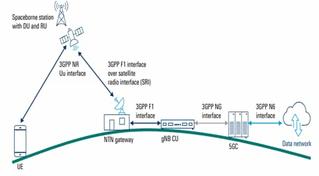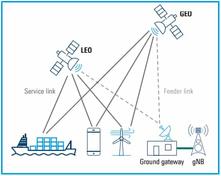NB-IoT NTN : SIB1, SIB31 & SIB32 Explained
Advertisement
Introduction : In the evolution of IoT connectivity, the extension of NB-IoT into Non-Terrestrial Networks (NTN) introduces new challenges in timing, Doppler, and propagation delay. To support NB-IoT UEs (User Equipments) over satellite or aerial links, 3GPP enhances the system information framework by introducing SIB1-NB, SIB31-NB, and SIB32-NB.
SIB1-NB
It is the first SIB which NB-IoT compatible UE decodes. Its role is to provide access control, cell selection / reselection information and scheduling information for further SIBs e.g. SIB31 and SIB32. In NTN, it also includes extensions or flags to indicate presence of satellite assistance SIBs. Following table mentions fields proposed to be carried by SIB1-NB.
| Field or Parameter | Purpose with description |
|---|---|
| CellAccessRelatedInfo | CellBarred/CellBarred-NTN (Barred or not) , access restrictions etc. |
| q-RxLevMin, q-QualMin | Minimum Signal/Quality thresholds for cell selection/re-selection |
| p-Max | Maximum UE transmit power permitted |
| freqBandIndicator | NB-IoT band indicator |
| schedulingInfoList | Determines how further SIBs are scheduled or broadcast |
| si-WindowLength | Duration of window in which SIBs are broadcasted |
| nonCriticalExtension | May carry cellAccessRelatedInfo-NTN, Also may carry sibType31-NB flag in extended scheduling info list. |
SIB31-NB
It is the System Information Block introduced to carry satellite/beam/propagation assistance data needed by NB-IoT UEs operating in an NTN cell. It provides critical information to UE which helps UE to perform following tasks.
- Estimating / compensating propagation delay / round-trip time (RTT)
- Uplink timing advance / offset compensation over very long link distances
- Doppler / frequency offset estimation or compensation
- Satellite ephemeris or orbital / state vector information
- Beam / cell timing / availability scheduling (when beams are visible / active)
- Other assisting parameters (offsets, mapping constants)
Following table mentions fields proposed to be carried by SIB31-NB.
| Field or Parameter | Purpose with description |
|---|---|
| K_mac, K_offset | parameters used in RTT / timing calculations for the UE to derive round-trip time and offset compensation. |
| RTT | round-trip delay estimation / offset |
| State vectors or orbital parameters | satellite position / velocity / ephemeris data to help UE predict satellite motion and Doppler shifts |
| Possibly cell timing / beam time scheduling or timing | when this cell becomes available / beams switch |
| Doppler / frequency compensation assist parameters | |
| Satellite identifiers, reference times | |
| Maybe coarse cell timing / epoch reference | |
| Other NTN assistance info that helps UE in alignment / pre-compensation |
SIB32-NB
It is an additional optional assistance block which may carry further predictive, continuity or extended satellite / beam information beyond SIB31. Following table mentions fields proposed to be carried by SIB32-NB.
| Field or Parameter ( Purpose with description) |
|---|
| State vectors / orbital parameters |
| Scheduling / timing info about when the satellite cell / beam will stop serving |
| Assistance for service continuity e.g. upcoming visibility / scheduling of next satellite passes |
| Possibly information about logged measurement or cell re-selection related data |
| Coarse location / coarse time reference |
| Possibly broadcast RLF / failure thresholds or neighbors cell or satellite info |
| Additional Doppler / compensation hints |
Conclusion: The trio of SIB1-NB, SIB31-NB, and SIB32-NB forms the backbone of system information broadcasting in NB-IoT over non-terrestrial networks. Together, they allow UEs to discover NTN cells, decode access parameters, and leverage satellite assistance data to compensate for long delays and motion dynamics.
Reference : ETSI TS 136 331 V17.1.0
Advertisement
 RF
RF

